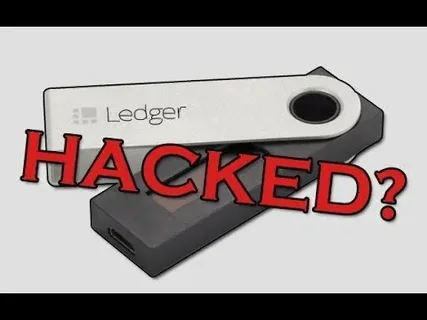Introduction
The U.S. government has increasingly leveraged blockchain technology, especially with its holdings from seizures of illicit funds. However, a recent alarming incident has underscored the vulnerabilities that even these high-security wallets face.
A government-linked crypto wallet was hacked, resulting in a $20 million breach that shook the financial and crypto communities. This attack raises critical questions about the security protocols in place for government-linked crypto assets, the attackers’ techniques, and the broader implications for cryptocurrency regulation and trust in digital assets.
This article dives into everything you need to know about the recent breach, including how it happened, the potential impacts on market prices, and what it signals for the future of secure government crypto holdings. By examining these details, we can better understand what went wrong and how these incidents shape the evolving relationship between the U.S. government and the world of cryptocurrency.

1. Background: The Rise of Government-Owned Crypto Wallets
Government-owned cryptocurrency holdings aren’t new. Over the years, the U.S. has amassed substantial crypto assets from criminal seizures, mainly of Bitcoin, Ethereum, and other major cryptocurrencies.
These holdings are stored in crypto wallets controlled by government agencies, with security measures that are among the most advanced in the industry. Despite this, the latest breach shows that even wallets secured by the government aren’t immune to hacks, reminding us that the very infrastructure underpinning digital currencies has its weak points.
Crypto wallets are generally categorized as “hot” or “cold.” Hot wallets, connected to the internet, offer ease of access but are more vulnerable to attacks, while cold wallets, stored offline, are considered far more secure. In this case, government agencies typically employ cold storage methods for large holdings, although recent details suggest that the $20 million breach might have involved a hot wallet or a temporary transfer between wallets.
The implications of government-owned crypto wallets getting hacked are profound. Unlike individual or private corporate wallets, when government funds are stolen, the fallout impacts a wide range of public interests and financial security measures. This event highlights the risks and benefits of government participation in the crypto sphere and the steps required to protect these digital assets better.
2. How the Breach Happened: Analyzing Security Gaps
The precise methods behind the U.S. government crypto wallet hack remain unknown, but initial reports point toward potential insider leaks or highly advanced phishing attacks. Cybersecurity experts have indicated that the hack might have exploited vulnerabilities in the wallet’s private key protection mechanisms. The “private key” is an alphanumeric password essential for accessing a crypto wallet, and its compromise almost guarantees access to all the funds within that wallet.
Advanced hackers often employ techniques like social engineering or malware targeting high-level employees within organizations to gain entry to such wallets. In this case, it’s speculated that social engineering tactics were possibly used to gain insider access or manipulate trusted custodians of the government wallet.
This breach raises several questions about the adequacy of the current security protocols in place for government-owned crypto wallets. The concept of a multi-signature wallet, which requires multiple approvals to access funds, could be a deterrent to such breaches. Additionally, this incident has prompted experts to recommend using hybrid Layer 2 solutions that blend enhanced cryptographic protocols and smart contract-based authorization layers to fortify security.
3. Market Implications of the $20 Million Hack
One of the most pressing concerns following this breach is its impact on the crypto market. The U.S. government is a major entity within the crypto landscape, and its entry into and actions within the market influence investor sentiment and asset valuations. The fact that a government-linked wallet was hacked signals a potential risk to market stability, particularly in how secure assets are perceived by large-scale investors and regulators.
Following news of the hack, Bitcoin, Ethereum, and other major cryptocurrencies experienced temporary volatility as market participants evaluated the severity of the breach. Generally, hacks that involve large sums trigger a wave of selling as investors seek to avoid potential downturns linked to negative news.
However, given the fast-paced recovery in crypto markets, the breach’s long-term effect on prices remains uncertain. Nevertheless, events like this demonstrate the importance of robust cybersecurity in preserving investor confidence, especially for institutions and governments with high-stakes holdings.
The hack also influences market dynamics by fostering discussions about potential government regulations to ensure stronger security measures are mandated for crypto custody providers. The potential for a domino effect, leading to the re-evaluation of crypto custodial services, has significant ramifications for asset prices, particularly for institutional crypto products that rely on secure storage.
4. Future of Government-Linked Crypto Wallet Security
The security breach in a U.S. government-linked crypto wallet underscores the need for heightened security protocols. With crypto rapidly becoming integral to both government and private financial portfolios, new strategies must be adopted to secure these assets. Advanced encryption methods, multi-factor authentication, and decentralized identification systems are all being proposed as solutions to reduce the risk of future breaches.
Looking forward, there is a call within the cybersecurity community for governments to invest in quantum-resistant encryption for protecting their crypto assets. Quantum computing, although not yet mainstream, poses a potential threat to current cryptographic standards. Governments may also start working more closely with blockchain security firms to establish rigorous testing protocols for any public sector wallets.
Additionally, the breach might accelerate the adoption of decentralized security models, such as the hybrid Layer 2 protocols designed to enhance wallet security through distributed authorization methods. This move could set new standards in wallet security, potentially leading to a shift in how crypto custodial services are managed across both public and private sectors.
Conclusion
The recent hack of a U.S. government-linked crypto wallet, resulting in a $20 million breach, has exposed the vulnerabilities inherent in even the most secure crypto systems. This incident serves as a stark reminder that, while crypto technology holds immense potential, it also demands unparalleled security measures to protect digital assets. As governments and institutional investors continue to enter the crypto space, it’s crucial to address these security concerns to avoid repeating such costly mistakes.
This event also brings to light the need for innovative approaches to securing large crypto holdings, such as hybrid Layer 2 solutions that offer additional protection layers. As the crypto industry continues to evolve, so must the security protocols that protect these valuable digital assets. The breach provides a valuable lesson for both the public and private sectors on the importance of robust cybersecurity in the digital finance world.
We’d love to hear your thoughts on this significant security breach. Do you think the government should implement stricter security measures for its crypto holdings? How do you believe this incident will impact crypto regulations? Share your views in the comments below!



